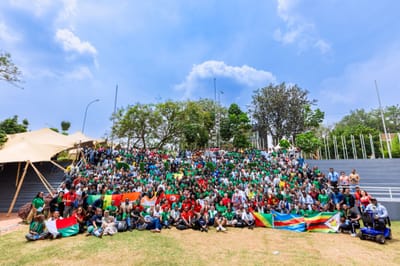By Sello Moloi
E-commerce is starting to take off in Afrika, making up between 1-3% GDP in seven sub-Saharan African countries, and with further predictions indicating that it will make up to 10% of total retail sales in key markets by 2025, a 40% annual growth over the next 10 years. The total retail economy is projected to grow rapidly, along with spending power per capita.
This growth is primarily driven by a rapidly growing communications infrastructure, thanks to a robust fiber backbone and mobile broadband networks boosting connectivity. The smartphone market is also growing rapidly, getting more people online than ever before.
The billion-dollar question, for investors, is whether the opportunity afforded by Afrika’s large and growing population outweighs the structural challenges the continent presents. Fewer than a quarter of the continent's roads are paved, and core e-commerce markets, including Nigeria, Kenya, and Egypt, struggle with access to electricity.
Despite the notably high connectivity stats, fewer than a third of Afrikans have the internet service they need to order goods and services online. However, e-commerce is still growing thanks to the following key factors.
Increasing mobile penetration
Forty-six percent of the population in Africa subscribed to mobile services at the end of 2015, which is equivalent to more than half a billion people. The adoption of mobile and smart devices has largely contributed to the growth of e-commerce due to the easy availability and accessibility of real-time information on the go.
It is also no surprise that many of these subscribers go online through their phones.
The number of mobile internet subscribers has tripled over the last five years. By the end of 2015, 300 million mobile internet subscribers were registered, and an additional 250 million are expected by 2020.
The implication of this is that more people have access to more online services and products, which in turn boost e-commerce. However, note that about 65% of mobile subscribers in Afrika still operate feature phones according to Pew Research Center. Therefore, there’s need to develop ways to diversify operations to both online and offline processes, thus fully tapping into the market.
A tech-savvy population
There is a growing population of DIY (Do It Yourself) millennials seeking relevant online content that will engage their energetic and curious minds. They are also after memorable online experiences, be it while doing an online purchase, a hotel booking, ordering food online etc.
Online service providers are therefore propelled to give nothing but the best, as well as offer personal experiences to retain customers and stay competitive.
Mobile money solutions
Whether sending money to family or friends, booking hotels online, or buying goods online, mobile payments which are done via mobile devices provide a convenient and efficient process for users.
Africa's mobile money market is predicted to be worth $14.27 billion by 2020. Mobile payment is highly preferred due to its convenient. For instance, approximately 60% of customers on Jumia Travel pay for their bookings via mobile money, including Mpesa in Kenya and Tigo Pesa in Tanzania.
Increased consumer spending
By 2025, Africa’s household consumer spending is expected to reach $2.1 trillion, representing an increase of 45% from 2015.
This presents promising business opportunities in a wide range of consumer-facing industries from entities offering healthcare to housing and leisure (travel). Projections show that Sub Saharan Afrika (SSA) will contribute 67% ($433 billion) of Afrika’s total growth in consumer spending between 2015 and 2025 which is projected at $645 billion in total.
Increased investment
Upon identifying Afrika’s potential in e-commerce development, both angel investors and companies are playing an important role by investing in e-commerce businesses in the continent. Driven by the amazing innovative talents, tech startups are on the rise and require constant mentorship and funding.
The growth of e-commerce in Afrika is driven in part due to the growing adoption of ICTs and lowering of barriers of entry to the online space. Online retailers are able to use social media to reach new clients, showcase their products on platforms such as Shopify and Bigcommerce, and take payments via mobile money. They are taking on, and in some cases partnering with, brick and mortar retailers, greatly increasing the options available to the average consumer and making life a lot easier for those looking to buy goods online.







